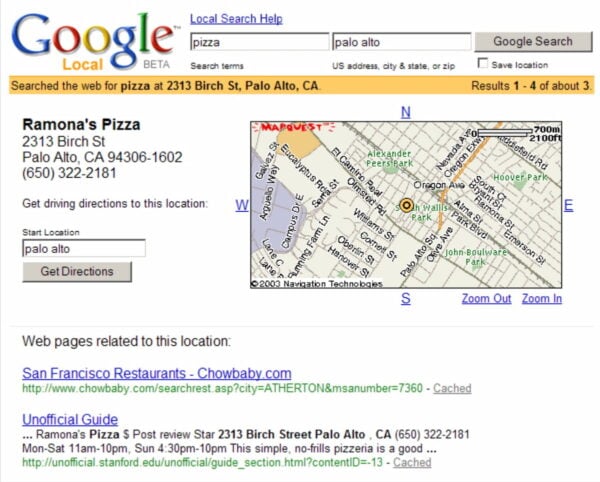Complementary businesses
You probably have colleagues in related industries to whom you refer business and from whom you’re referred regularly. Make sure these referral relationships are represented online in the form of links. That way, Google knows that your companies vouch for each other just as you do offline.
Interviews and guest columns
Local publications like newspapers and alternative weeklies or monthlies are terrific places to get your business featured. And the chances may be better, especially in smaller towns or tightly-knit neighborhoods, that a friend of a friend works at one of these companies.
The future of links and rankings
SEO professionals have been predicting the demise of links for many years. But there’s little evidence to support this trend, even though Google’s John Mueller recently hinted at a future where they might rely less on links. Google has gotten better at penalizing low-quality links through various algorithm updates. Still, if anything, high-quality links have been that much harder to come by and even more valuable to their recipients.
Citations and online mentions
In 2005, the internet was a very different place. MySpace, not Facebook, was all the rage, and Twitter, Pinterest, and Instagram weren’t even close to launching. There was no iPhone, and there was no Android. In a nutshell, the world was far less digital. When you searched at Google, it returned ten blue links of webpage results. Inbound links largely determined the authority of those web pages.
But the launch of Google Maps in early 2005 and the subsequent release of the 10-pack in May 2007 introduced something entirely different. Google Maps and the 10-pack ranked business listings, not websites, required a completely different algorithm – an algorithm that remains distinct today.
Google has changed a lot over the years, but the underlying foundation of that Maps/10-pack algorithm still seems to be in place today in the Maps/3-pack interface that has succeeded it.

What’s a citation?
A citation references your name, address, or phone number online. While inbound links were the dominant ranking factor for the ten blue links results, Google’s listing-based results couldn’t rely primarily on inbound links alone to determine rankings. At the time, many businesses in Google’s business index didn’t even have websites; some still don’t. Without a website, there’s nothing for other sites around the web to link to. So Google had to develop an alternative ranking algorithm that wasn’t dependent on links.
These Name, Address, and Phone number (NAP) mentions online are what we know as citations. Your NAP is your digital thumbprint — it’s how Google knows that a website mentions your business as opposed to someone else’s. The more times Google sees your thumbprint on reputable websites, the more confident it is displaying a reputable company in its search results. Remember to be consistent anywhere you expect Google to pick up your thumbprint.
Mixing and matching your NAP makes it much harder for Google to match mentions of your business. Subsequently, giving your business credit through rankings is more challenging. If those mismatches appear in prominent enough sources, they can lead to duplicate listings. This is a headache that no business wants to develop.
NAP consistency is critical between your website and Google My Business. Yoast Local SEO makes this two-way consistency easy.
Comments
Post a Comment